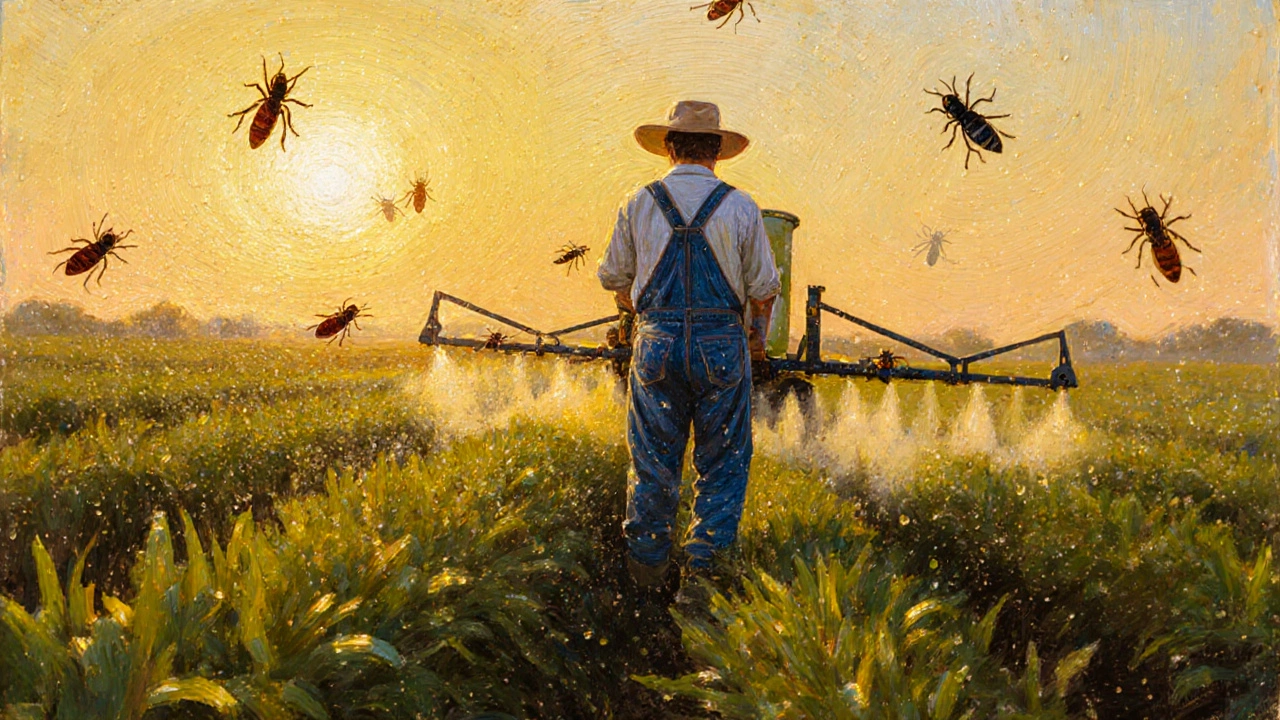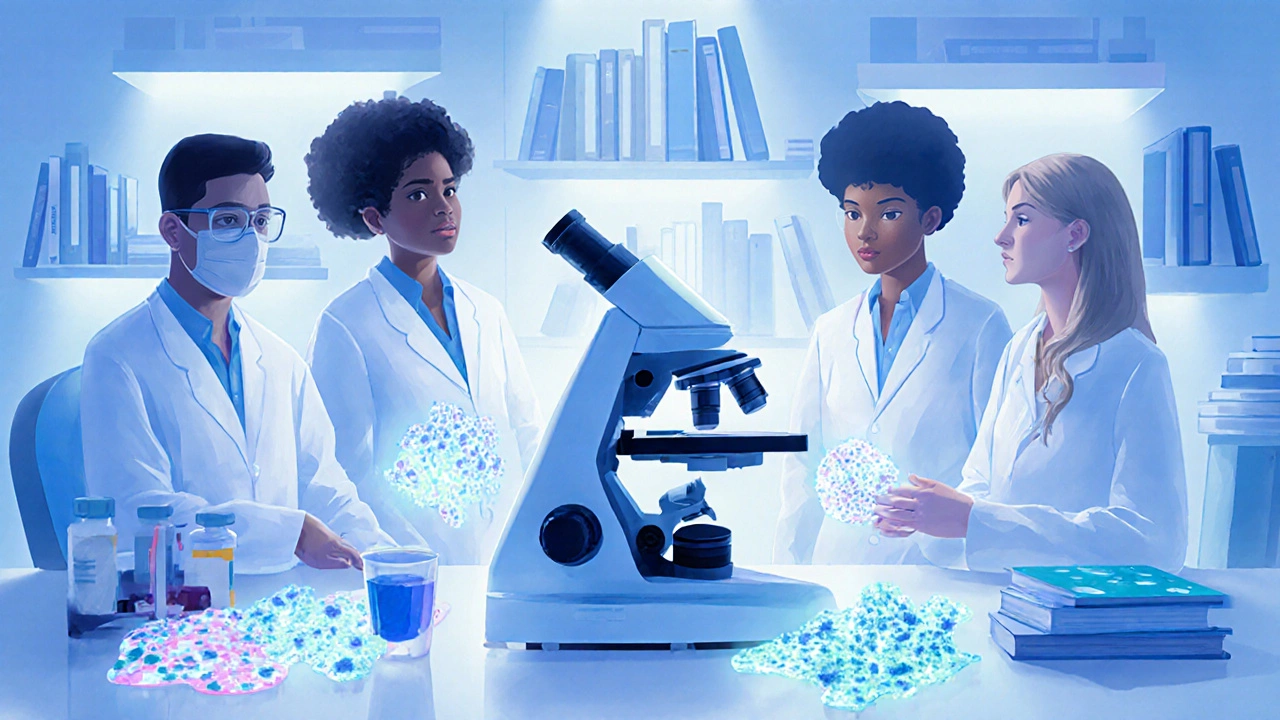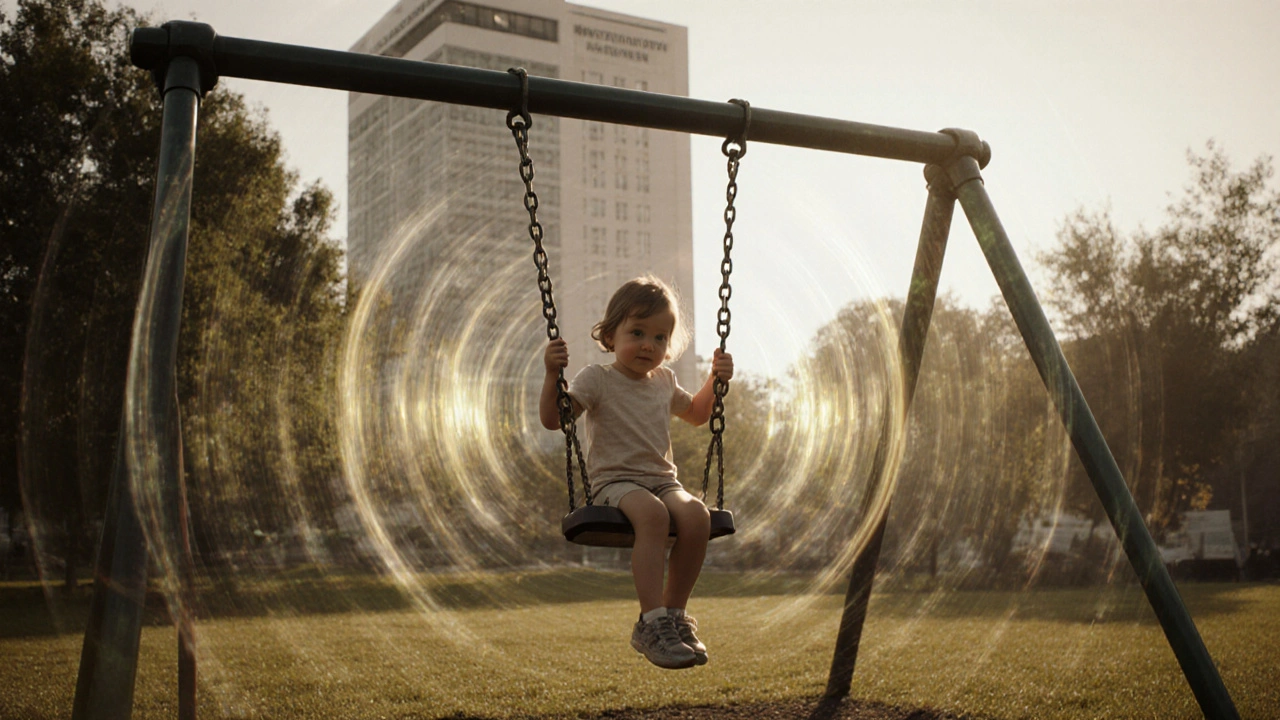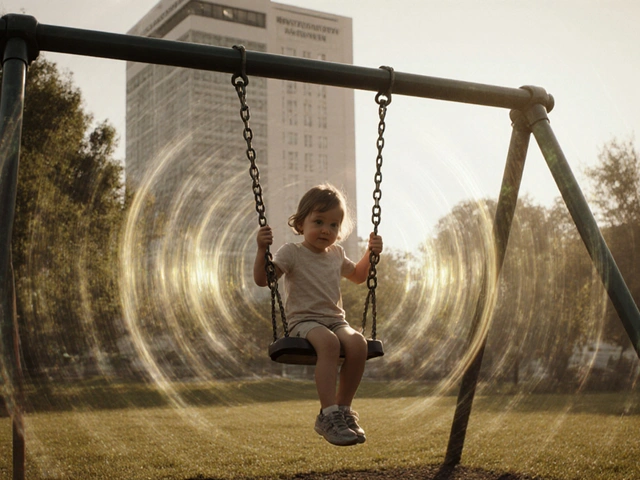Quick Takeaways
- Rhabdomyosarcoma is a rare childhood muscle cancer with both genetic and environmental triggers.
- Key environmental suspects include ionizing radiation, certain pesticides, and some viral infections.
- Evidence varies: radiation has strong support, while links to chemicals remain tentative.
- Reducing exposure during pregnancy and early childhood can lower overall cancer risk.
- Stay informed of new research; many questions still lack definitive answers.
Rhabdomyosarcoma is a malignant tumor that arises from skeletal muscle precursor cells. It accounts for about 3% of all childhood cancers, with an incidence of roughly 4.5 cases per million children under 15years old. While most cases appear without a clear cause, scientists have long suspected that the environment may play a role alongside inherited genetic mutations.
Rhabdomyosarcoma doesn’t just affect kids; it can also appear in adolescents and, rarely, adults. Understanding which external factors might push a healthy cell toward malignancy helps families and clinicians make smarter prevention choices.
What Is Rhabdomyosarcoma?
The disease falls into two main histologic groups: embryonal (more common in younger children) and alveolar (often linked to specific genetic translocations). Both types share a hallmark-cancerous cells that look like early-stage muscle fibers. Diagnosis typically involves imaging, biopsy, and molecular testing to identify characteristic gene fusions such as PAX3‑FOXO1 or PAX7‑FOXO1.
Survival rates have improved dramatically thanks to multimodal therapy-surgery, chemotherapy, and radiation-but long‑term side effects remain a concern. This makes the search for preventable risk factors all the more urgent.
How the Environment Could Influence Risk
Environmental exposure means anything outside the body that can interact with our cells: chemicals, radiation, infections, lifestyle habits, and even the built environment. When a harmful agent reaches a cell, it can cause DNA damage, trigger abnormal signaling pathways, or disrupt normal growth controls. If a child’s developing muscle tissue encounters such insults during a critical window, the chance of a malignant transformation may rise.
Scientists study these links through epidemiologic surveys, case‑control studies, and animal models. The challenge is that rhabdomyosarcoma is rare, so gathering enough data to spot clear patterns takes time.
Major Environmental Risk Factors
Below is a snapshot of the most discussed environmental suspects, along with what current research says about each.
| Factor | Primary Source | Evidence Strength | Typical Exposure Age |
|---|---|---|---|
| Ionizing Radiation | Medical imaging, nuclear accidents | Strong (consistent case‑control data) | Prenatal / early childhood |
| Pesticides | Agricultural sprays, residential lawn chemicals | Moderate (some regional studies, mixed results) | In‑utero & early infancy |
| Industrial Solvents | Paint thinners, cleaning agents | Weak to moderate (limited case series) | Childhood |
| Viral Infections | Human papillomavirus, Epstein‑Barr virus | Weak (biological plausibility, scarce epidemiology) | Any age; often early infection |
| Air Pollution | Particulate matter, polycyclic aromatic hydrocarbons | Very weak (preliminary cohort data) | Urban upbringing |

Digging Deeper into Key Suspects
Ionizing Radiation
Radiation is the only environmental factor with a well‑established causal link. Children who receive high‑dose radiation for other cancers, or those exposed to nuclear fallout, have a markedly higher incidence of rhabdomyosarcoma. The DNA double‑strand breaks caused by ionizing photons can produce the same translocations seen in alveolar subtypes.
Pesticides
Several epidemiologic studies from agricultural regions (e.g., the Midwest US, parts of Europe) report a modest increase in risk among children whose mothers lived near intensive farming during pregnancy. Organophosphate and carbamate compounds are the usual suspects. However, confounding factors like socioeconomic status and other chemical exposures make it hard to isolate the pesticide effect.
Industrial Solvents
Solvents such as benzene and toluene have known leukemogenic properties, but their connection to rhabdomyosarcoma is less clear. Case reports of children in homes with recent renovations hint at a possible link, yet larger population studies have not confirmed a statistically significant association.
Viral Infections
Some rare cancers-like Burkitt lymphoma-are driven by viruses. Researchers have explored whether oncogenic viruses could act as a “second hit” after a genetic mutation. So far, the data for rhabdomyosarcoma are inconclusive, though in vitro studies show that certain viral proteins can disrupt muscle cell differentiation.
Air Pollution
Fine particulate matter (PM2.5) can carry carcinogenic polycyclic aromatic hydrocarbons (PAHs). A handful of cohort analyses suggest a nonsignificant trend toward higher childhood sarcoma rates in polluted cities, but the signal is weak and likely overlapped with other risk factors.
Assessing Your Personal or Family Exposure
Even if you can’t control every environmental factor, you can lower the most modifiable risks.
- Talk to your OB‑GYN about the necessity of diagnostic imaging during pregnancy; opt for ultrasound over CT when possible.
- Choose organic produce or wash fruits and vegetables thoroughly to reduce pesticide residues.
- Avoid using household solvents in poorly ventilated spaces; wear gloves and masks if you must.
- Stay up‑to‑date on vaccinations; while not proven to prevent rhabdomyosarcoma, they reduce overall infection burden.
- Encourage indoor air quality-use HEPA filters, keep windows open when outdoor air is clean, and limit exposure to secondhand smoke.
These steps won’t guarantee prevention, but they align with broader public‑health recommendations for reducing childhood cancer risk.
Current Research Gaps and Future Directions
Large, multinational registries are needed to capture enough cases for robust statistical power. Researchers also call for:
- Genomic‑environment interaction studies that pair DNA sequencing with detailed exposure histories.
- Longitudinal birth‑cohort designs to pinpoint critical windows of susceptibility.
- Better biomarkers for low‑level pesticide or solvent exposure in pregnant women.
- Animal models that mimic human muscle development for testing specific chemicals.
Funding agencies have started to earmark grants for rare‑cancer environmental studies, so we can expect clearer answers in the next decade.
What to Do If You’re Concerned
If you suspect an environmental exposure may have contributed to a diagnosis, discuss it openly with your oncology team. They can refer you to a genetic counselor or an environmental health specialist. In some regions, cancer registries allow patients to submit exposure data, which helps researchers build better risk models.
Remember, a single exposure rarely acts alone; most cases arise from a complex mix of genetics, lifestyle, and environment. Keeping a balanced perspective reduces anxiety while still encouraging proactive health choices.

Frequently Asked Questions
Can parental exposure to chemicals cause rhabdomyosarcoma in children?
Some studies suggest a link between parental occupational exposure to certain pesticides or solvents and a modestly higher risk for their kids, but the evidence is not definitive. Reducing exposure during pre‑conception and pregnancy is the safest approach.
Is there a safe level of radiation exposure for pregnant women?
Medical guidelines consider diagnostic X‑rays below 50mGy to be low risk, but any unnecessary exposure should be avoided. Discuss alternatives like MRI or ultrasound with your doctor.
Do vaccines protect against rhabdomyosarcoma?
Vaccines do not directly prevent this cancer, but they lower the chance of viral infections that could act as a secondary risk factor.
Should families move away from high‑pesticide farming areas?
If relocation is feasible, it can reduce lifelong exposure to multiple agricultural chemicals. However, the decision should weigh overall lifestyle, socioeconomic factors, and available healthcare.
How is rhabdomyosarcoma staged and treated?
Staging combines tumor size, location, lymph‑node involvement, and metastasis (the TNM system). Treatment typically involves surgery to remove the tumor, multi‑agent chemotherapy, and radiation therapy for local control.



 Medications
Medications


![Buy Generic Zovirax (Acyclovir) Online Cheap in the UK [2025]: Safe, Legal, and Fast](/uploads/2025/08/thumbnail-buy-generic-zovirax-acyclovir-online-cheap-in-the-uk-2025-safe-legal-and-fast.webp)


S. Davidson
September 28, 2025 AT 17:22Look, the data on ionizing radiation is crystal clear-multiple case‑control studies line up like dominoes showing a causal link. The other suspects, like pesticides, are still swimming in a sea of confounding variables, so you can’t blame them outright. If you’re scanning a pregnant woman’s abdomen, opt for ultrasound; CT scans crank the dose up unnecessarily. Also, remember that the translocations seen in alveolar RMS (PAX‑FOXO1) are practically fingerprints of radiation damage. Bottom line: focus mitigation efforts where the evidence is strongest, not where it’s merely speculative.
Haley Porter
October 4, 2025 AT 17:22From a mechanistic standpoint, the etiologic model of rhabdomyosarcoma integrates both genotoxic stressors and epigenetic modulation. Ionizing radiation imposes double‑strand breaks that precipitate oncogenic translocations, whereas organophosphate exposure may perturb the myogenic differentiation axis via acetylcholinesterase inhibition. The epidemiologic signal for pesticides is modest, but when you calibrate exposure windows to the embryonic myogenic progenitor phase, the risk gradient sharpens. Thus, a granular exposure assessment is indispensable for any robust risk quantification.
Samantha Kolkowski
October 10, 2025 AT 17:22Yeah, the pesticide link is kinda fuzzy.
Nick Ham
October 16, 2025 AT 17:22Radiation = strong evidence; pesticides = moderate; solvents = weak. Prioritize dose reduction in prenatal imaging.
Jennifer Grant
October 22, 2025 AT 17:22When we contemplate the ontogeny of skeletal muscle, we must acknowledge that the embryonic milieu is a crucible where genetic fidelity and environmental integrity converge. The embryonal subtype of rhabdomyosarcoma, predominating in younger children, appears especially vulnerable to perturbations that interfere with myogenic precursor signaling pathways. Ionizing radiation, by virtue of inflicting double‑strand DNA breaks, creates a substrate for the characteristic PAX‑FOXO1 fusion that drives the alveolar phenotype. Pesticidal compounds, notably organophosphates, have been implicated in dysregulating acetylcholine pathways, which inadvertently modulate myogenic transcription factors such as MyoD and Myf5. While the epidemiologic data on pesticides remain heterogeneous, the biological plausibility is reinforced by animal models demonstrating altered muscle fiber differentiation under sub‑toxic exposure levels. Industrial solvents like benzene and toluene, though primarily leukemogenic, may exert ancillary effects on muscle progenitors through oxidative stress mechanisms, yet the current human data are insufficient to ascribe causality. Viral oncogenesis, a cornerstone in cancers such as Burkitt lymphoma, remains an elusive candidate for rhabdomyosarcoma, though in vitro studies show that certain viral proteins can subvert the myogenic differentiation program, hinting at a potential "second hit" scenario. Airborne particulate matter, laden with polycyclic aromatic hydrocarbons, introduces a chronic inflammatory milieu that could theoretically augment mutagenic risk, but epidemiologic signals are weak and confounded by socioeconomic variables. From a preventive perspective, the most actionable strategy is the minimization of high‑dose radiation during critical developmental windows, opting for ultrasound or MRI whenever clinically feasible. Concurrently, advocating for integrated pest management and organic produce reduces parental pesticide burden, while proper ventilation and protective equipment mitigate solvent exposure in domestic settings. Ultimately, a multidimensional approach that couples rigorous exposure assessment with genomic profiling will illuminate the gene‑environment interplay that underlies this rare sarcoma, paving the way for evidence‑based public health interventions.
Kenneth Mendez
October 28, 2025 AT 16:22Yo, all these "studies" are just the elites pushing their agenda. They want you to trust the government’s radiation guidelines while they hide the real chemtrail exposure that’s making kids sick. Wake up!
Gabe Crisp
November 3, 2025 AT 16:22Honestly, the moral panic over a few extra scans is overblown. If you’re not willing to diagnose a real disease, you’re just putting kids at greater risk.
Paul Bedrule
November 9, 2025 AT 16:22One could argue that the epistemic hierarchy of evidence places randomized trials above case‑control studies, yet for rare entities like RMS the latter remain indispensable. The ontological status of "risk" is thus a construct of statistical inference rather than absolute truth.
yash Soni
November 15, 2025 AT 16:22Honestly, who cares about a table of vague chemicals? Just eat your veggies and stop looking for a conspiracy in every lab report.
Emily Jozefowicz
November 21, 2025 AT 16:22Hey, I get the sarcasm, but it’s nice to sprinkle in some practical tips-like washing those veggies thoroughly. It’s the small, colorful steps that make a difference.
Franklin Romanowski
November 27, 2025 AT 16:22Appreciate the reminder about washing produce! For anyone feeling overwhelmed, just start with one habit-maybe swapping a conventional fruit for an organic one each week. Small changes add up, and you’ll feel better knowing you’re doing something proactive.
Brett Coombs
December 3, 2025 AT 16:22All this talk about “evidence” is just the mainstream media trying to keep us in line. Real truth is out there, hidden by the global elites.
John Hoffmann
December 9, 2025 AT 16:22The grammar in the original post is generally solid, though the phrase "cells" could be streamlined to "cells" for consistency. Also, consider replacing "couple" with "pair" when referring to a duo of risk factors.
Shane matthews
December 15, 2025 AT 16:22Nice catch on the commas I think but also maybe add a period after the bullet list